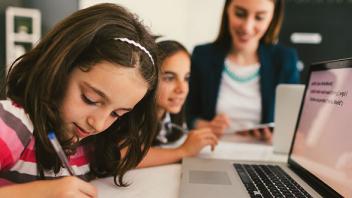Imagine walking into a fifth‐grade classroom where students are editing podcasts on GarageBand, drafting scripts for their stop‐motion animation film on creativity, or creating digital response charts to a Langston Hughes poem in preparation for a forum on diversity and equity in American society. These digital literacy practices highlight the potential of 21st‐century literacies pedagogy, but they do not expose the complexity of doing this work in a multilingual and multicultural inclusive classroom (Bray, Mrachko, & Lemons,2014).
Inclusive classroom teachers who engage in innovative pedagogies that draw on digital literacies have to schedule minilessons, learning experiences, rehearsals, presentations, and discussions around multiple pullouts (i.e., tutoring, ESL, speech, occupational therapy, and other related services). Across our previous teaching experiences, this typically meant that students who received additional services often had limited access to working through the layered process of creating digital projects that could demonstrate their capacity to make sense of content across modalities.
As we worked together to understand the potential of incorporating digital literacies into an inclusive learning environment, we recognized that Emily (one of the authors of this article) had fostered a collaborative relationship among the support staff to drastically reduce the amount of time students were pulled out of the classroom for remedial instruction. By doing so, Emily ensured that students identified as needing additional services would receive time in the classroom to experience 21st‐century literacy practices within the same participation structures and time frame as the general education students. As a result, all students in her classroom were positioned as competent contributors to an emerging community of practice centered on digital literacies.
In Emily’s classroom, which she aptly named the Hive Society, 10‐ and 11‐year‐olds thrive by drawing on their individual and collective strengths to make sense of the world while trying to make a difference (Saunders & Smith, 2014). Our collective inquiry into how inclusive literacy practices can foster an environment where all students have experiences with digital tools that allow them to become producers and consumers of knowledge led us to think about the specific ways students could engage with 21st‐century literacies to showcase their diverse perspectives and promote academic success.
Students in the Hive Society move seamlessly between individual, partner, small‐group, and whole‐class instruction to broaden, challenge, or affirm their thinking. After deep introspection of this learning environment, our team — a classroom teacher, a university professor, and a doctoral student — felt the need to share the instructional practices enacted in the classroom that help all children succeed. In particular, we chose to highlight how the tenets of 21st‐century literacies (re)positioned Lee, a biracial female fifth‐grade student who was identified as having a learning disability, as a competent and capable learner.
Why inclusivity matters
If the notion that public schools should prepare children to be proficient consumers, producers, and disseminators of a variety of print‐based and digital texts is taken seriously, then all students, particularly those receiving special services, should have access to pedagogies that promote fluency with tenets of the 21st century literacies framework.
By supporting inclusivity, our team wishes to actively work against deficit constructions of students with academic, linguistic, physical, cognitive, or economic factors that impede their ability to access the district‐approved curricula without additional supports (Oyler, 2011). Instead, we promote constructing learning experiences based on the fluctuating needs of students that attend to the social, political, and economic realities of being labeled as special education, bilingual, at‐risk, struggling, or below grade level.
In essence, our stance on inclusivity is rooted in equity‐based pedagogies that require us to provide enriching curricula for all students (Biklen, 2000; Naraian, 2014; Palincsar, Cutter, & Magnusson, 2004; Shelton & Fu, 2004), which includes access to inquiry‐based teaching and the use of technology and rejects the idea that students who receive specialized services should be subjected to remedial coursework or digital tools that position them as passive recipients of information.
The impact of 21st‐century literacies
As a way to understand how Lee engaged with digital tools while addressing social issues, we draw upon two bodies of work: 21st‐century literacies and social justice pedagogy. The International Literacy Association (ILA) and the National Council of Teachers of English (NCTE; 2009) published position statements on new and 21st‐century literacies that provide a helpful heuristic for our work. NCTE defines 21st‐century literacies as these abilities for teachers and students:
- Develop proficiency and fluency with the tools of technology.
- Build intentional cross‐cultural connections and relationships with others to pose and solve problems collaboratively and strengthen independent thought.
- Design and share information for global communities to meet a variety of purposes.
- Manage, analyze, and synthesize multiple streams of simultaneous information.
- Create, critique, analyze, and evaluate multimedia texts.
- Attend to the ethical responsibilities required by these complex environments.
This definition anchors possibilities for infusing a print‐based literacy curriculum with elements of new literacies. ILA’s position statement complements this definition by focusing on paradigmatic shifts in pedagogy and curriculum development to help understand the following:
- Digital tool use requires new social practices, skills, strategies, and dispositions for the tools’ effective use.
- New literacies are rapidly changing as defining technologies change.
- New literacies are multiple, multimodal, and multifaceted; thus, they benefit from multiple lenses seeking to understand how to better support our students in a digital age.
Together, these stances support our commitment to reimagining and revising the curriculum as a tool for innovative teaching. We designed an inquiry that explored topics such as diversity and equity while including hybrid digital tools such as blogs, apps, Web 2.0 platforms, and multimedia texts (Mills, 2010) to promote a learning environment steeped in critical thinking, collaboration, and expansive ways of conceptualizing written and oral communication.
While Emily’s classroom engaged in digital literacy practices, the substance of the work the students produced was grounded in social justice pedagogy. The phrase teaching for social justice has proliferated in educational scholarship and settings, generating a variety of discourses about what it means to engage in social justice teaching (Jones & Enriquez, 2009; North, 2008).
We find Lipman’s (2004) framework for social justice to be a useful heuristic for teachers to (1) reflect on ideologies that undergird the school curriculum; (2) question how decisions are made and who benefits; and (3) attend to factors that lead to systemic inequities in schools. Lipman’s model frames social justice as the pursuit of equity, agency, cultural relevance, and critical literacy.
Developing a curriculum that builds on students’ funds of knowledge (Moll, Amanti, Neff, & Gonzalez, 1992) provides access to digital tools, explores social issues, and creates a platform for sharing information with others reflects how our team merged this theory into practice.
We believe Lee’s case can provide insight into how a 21st‐century literacies perspective can support inclusive literacy practices students learn while attending to elements of social justice.
Factors promoting student development
As our team continued to observe and analyze Lee’s progress alongside the other students in her fifth‐grade language arts class, we were struck by three elements that helped to support and develop her 21st‐century literacies skills. These elements were (1) working in a community of learners, (2) using digital tools to make the curriculum accessible, and (3) linking academic goals with real‐world platforms (Figure 1). Across all three elements, Lee was able to develop a strong sense of what it means to be literate in today’s world and have a role in shaping what it means to be literate in tomorrow’s world. In the next sections, we provide a general overview of these three factors and then focus on one learning experience that highlights the potential impact digital tools had on Lee’s academic success.
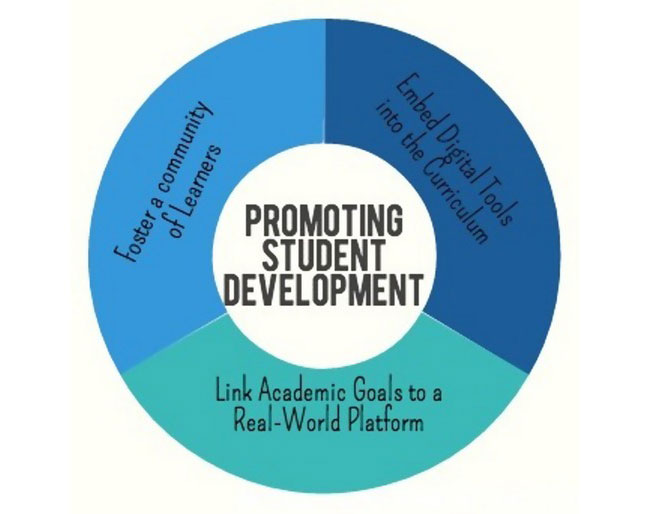
Figure 1. Framework for Promoting Student Development
Creating a community of learners
Lee belonged to a classroom community, the Hive Society, where inquiry and democratic learning are principles put into action every day. Emily has cultivated a learning community where students see themselves as teachers and learners. At times, the students take the lead on lessons and devise questions for their peers to ponder about the text they are reading, connect current events in society to these texts, and design social justice projects to extend their conversations to a broader community.
In the Hive Society, students are active participants in their own learning and take responsibility for sharing what they know and how they make sense of the curriculum as a team (Wells, 2000). Creating this type of flexible curriculum requires Emily to get to know her fifth‐grade students as individuals with different aspirations and interests. From the moment the school year begins, students are engaged in activities to define who they are (Saunders & Smith, 2014) or create podcasts about memorable moments in their lives.
For Lee, the memorable moments have centered on understanding autism and being encouraged to voice an opinion that is often silenced in school. Feeling empowered to share her thoughts helped Lee contribute to whole‐group conversations, partner work, and small‐group projects. In the Hive Society, Lee and the other students know their voices and interests matter. In this community, everyone counts on each other to raise questions, provide resources, and share information that contributes to the learning and development of the whole community. Being able to work across modalities while interacting with her peers helped Lee strengthen her literacy knowledge.
For example, Lee used Flipboard, an app for curating news stories, and Bitstrips, a website for creating original comics, to explain her topic of interest in a graphic format (see Figure 2). Whenever Lee’s group came across articles that could provide more information, they were able to apply this knowledge to their comic strip in hopes of helping others to better understand autism.
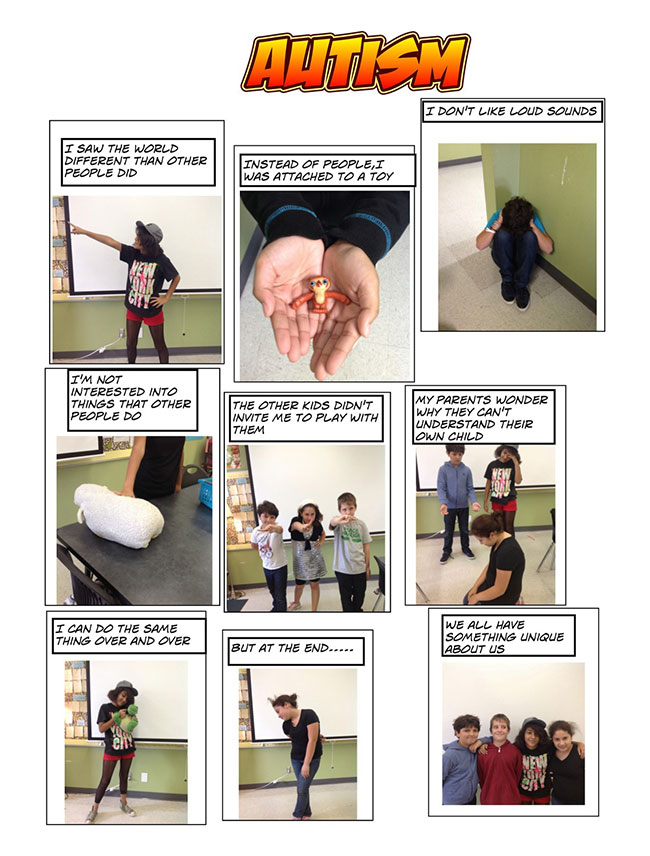
Figure 2. Autism Digital Comic Strip
Being in the Hive Society is a huge departure from the type of learning Lee was accustomed to receiving in school. Unlike previous years, where Lee was pulled out of the classroom for tutoring or to complete worksheets that focused on isolated skills, she is now able to work alone, with a partner, or with a small group, or engage in whole‐group conversations that support her emerging ideas and give her space to consider other perspectives and the context surrounding the information (Stanford, Crowe, & Flice, 2010).
Since the majority of learning in the Hive Society centers on student inquiry, Lee is able to demonstrate her ability to formulate an argument for a position she is passionate about, such as autism, because she has spent time talking about the research on autism with her classmates, examining multiple positions and opinions while simultaneously forming her own thoughts.
Frequently, we would observe Lee debate about the character’s intent in Cynthia Lord’s (2008) Rules and connect her personal perspective to the characters in the story. These conversations informed her digital expression of ideas and helped her construct projects with a targeted message. For example, Lee composed several drafts for her response before selecting the representation shown in Figure 3 to submit. She shared each draft her with group and debated the merit of the feedback to help her decide how to focus her ideas.
Lee’s confidence level and belief in her ability to interact and challenge her peers’ thought processes demonstrate the power of the collaborative nature in the Hive Society and the type of community it created. It is this tension in the Hive Society, that creates a dynamic learning space inviting everyone to be a participant and try something new.
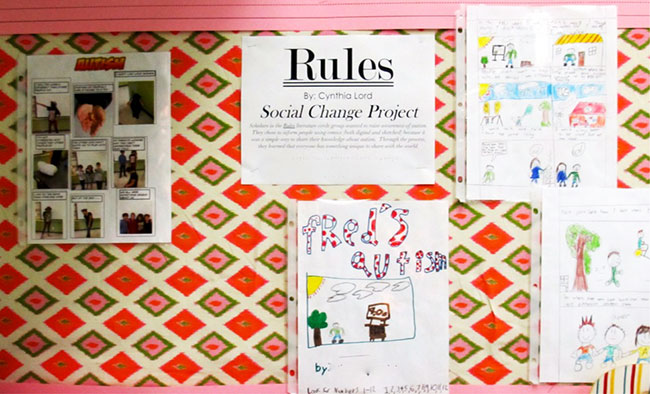
Figure 3. Classroom Bulletin Board With Lee’s Social Change Project About Autism
Using digital tools to make the curriculum accessible
In the Hive Society, students shared their thoughts and observations using a variety of modalities. As the students worked in tandem with one another, they learned to challenge each other to develop more sophisticated understandings of the information provided. The apps and digital tools functioned as a mediator between individual and collective knowledge.
For instance, after Emily finished a whole‐group minilesson, it was common to see students working in pairs to answer questions, connect texts, or brainstorm potential project ideas to link the content they were learning about to current societal issues. As the students shared their questions, ideas, and connections to the book, they used apps or other Web 2.0 platforms to create a visual depiction of their evolving ideas. Lee’s literature discussion group (Maloch, 2005) used an app called Corkulous to help them organize their thoughts on an electronic bulletin board (see Figure 4).
The students in Lee’s group recorded their thoughts using color‐coded electronic sticky notes and then created a space on their electronic board for their ideas on the upcoming social change project, which was linked to their literature circle book. In addition, the students posted possible overarching themes of their literature circle text.
Each week, Lee’s group would alter their predictions, add more wonderings, or condense their thoughts on the social change project. Given the collaborative nature of group work in the class, if students wanted to incorporate a specific element, they had to convince their group members to include it. This artful deliberation of sharing their thoughts and supporting it with evidence helped to strengthen Lee’s textual understanding, her thought process, and her ability to persuade her peers.
Figure 4 is an early example of students organizing their ideas into topics, questions, images, and thoughts from each participant, while Figure 5 shows the students engaged in this process.
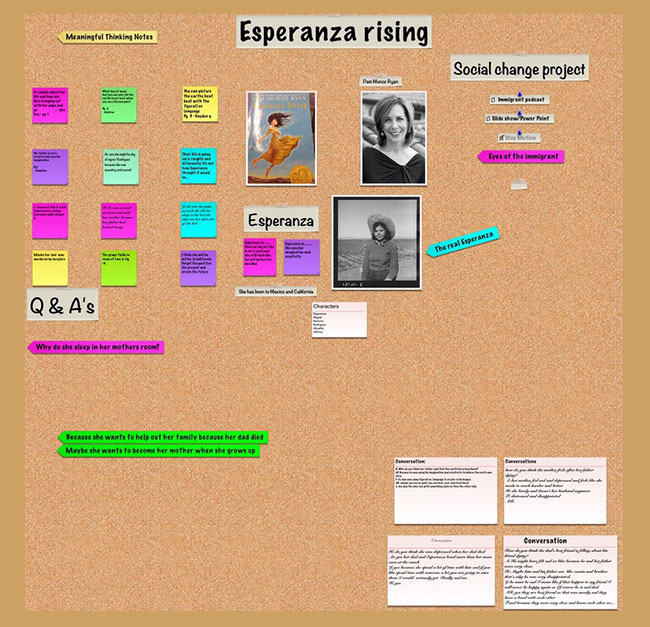
Figure 4. Students Using Corkulous to Share Ideas
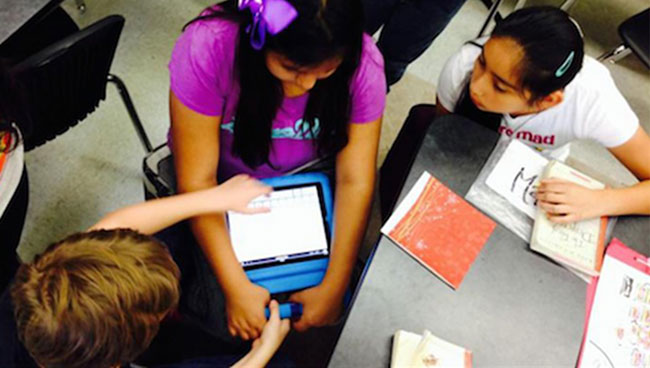
Figure 5. Students Using iPad During Literature Discussion
Another tool students used frequently to compose with is GarageBand. For example, Lee would digitally record a memorable moment that shaped her life, then use GarageBand to edit it and create a podcast (see Figure 6). This activity incorporated all of the elements of the writing and composing across modalities.
First, Lee (along with her classmates) brainstormed ideas about a memorable moment in her life. Next she wrote, edited, and revised her story to incorporate elements from whole‐group minilessons based on NPR’s StoryCorps. This program served as a mentor text that provided specific craft lessons about voice, music, tone, inflection, and narration.
Finally, once Lee and her classmates recorded and mixed their stories using GarageBand, they published the podcasts on their class website. During this process, students helped each other with the recording and editing of the podcasts, and a few students were deemed “experts” who could assist their peers as they worked on their projects. Lee listened to the experts’ advice and revised her podcast to incorporate their suggestions. Lee’s engagement with this type of multimodal literacy was an integral aspect of her learning in the Hive Society.
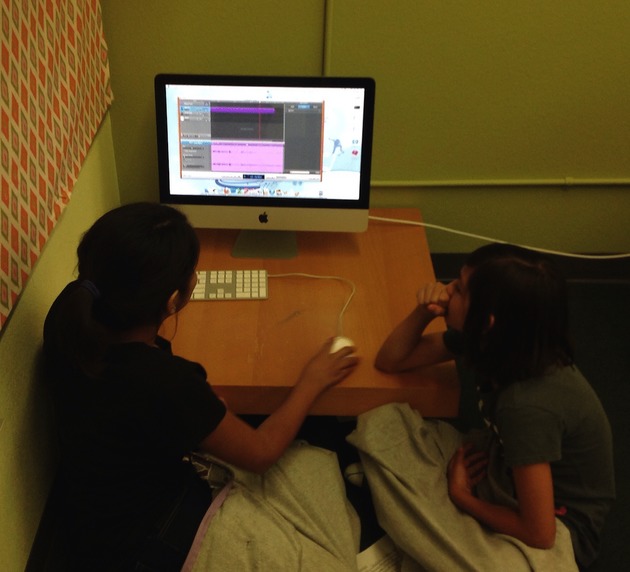
Figure 6. Students Working With GarageBand
Linking academic goals with real‐world platforms
Incorporating digital tools into the classroom can provide students with authentic audiences with whom to share their learning across a variety of modes. In the Hive Society, each unit of study provided an opening for the students to develop inquiry projects that linked their interests and academic skills with a digital platform. These inquiries encouraged students to closely examine issues that were important to them while learning how to make real‐world connections to what they are learning in school.
For example, in the literature group, all of the students explored a social change project that related to the concepts addressed in the book (see Figure 7). The students had a lot of autonomy in creating and producing their own social change projects, but one component always included community engagement.
Each week, Emily tweeted and blogged about the work students were doing in class, inviting them and their followers to respond with questions or comments (see Figure 8). Sometimes, the comments or questions from followers helped prompt the students to alter or clarify their social change projects. Often, the students could be found checking to see if they received a response on their posted ideas or offers of support for their projects.
By making their work visible not only to the school community but also to others outside of the school, the fifth‐graders are able to share their thoughts about topics on social issues relevant to their community and position themselves as problem solvers who want to make a difference in the world.
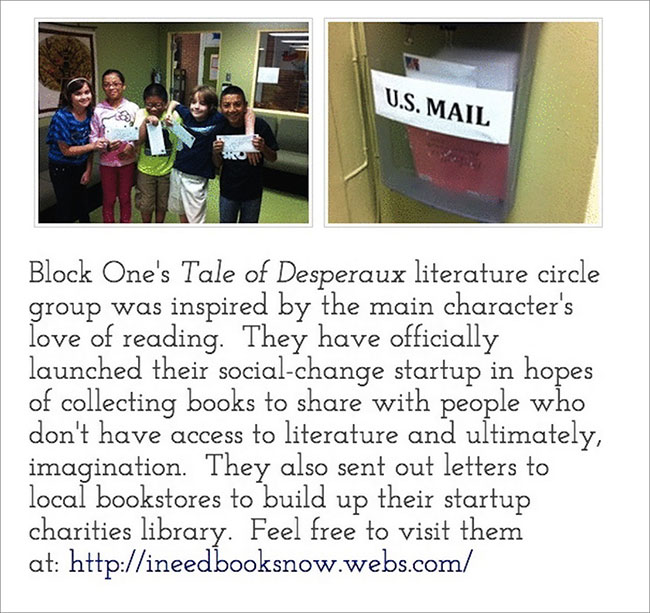
Figure 7. Hive Society Website

Figure 8. Example of Social Action Project for Pets
Putting it all together
Thinking across the three elements of support — a community of learners, digital tools, and real‐world content — we found that the students’ literacy practices and skills became more complex and deliberate. Thus, by integrating real‐world aspects, our inquiry taught us that the students were exceeding the academic expectations set in district standards. This is a departure from what the literature communicates about “at‐risk” or “struggling” students.
For Lee, being part of an environment embedded with inclusive literacy practices provided access to the same rigorous curriculum her peers received and thus increased her opportunity to engage in digital literacy practices. Her academic status no longer functioned as an obstacle that placed her on the margins, limiting the semiotic tools or modes of representation available to her for meaning making. She was a full participant in this community, and that supported her foray into the world as a public intellectual.
However, to make sure that Lee (as well as other students) consistently had these opportunities, Emily had to work with her colleagues to rearrange the schedule, eventually moving from a pullout services model to a push‐in model of inclusion. But did these experiences support Lee’s literacy development across print and digital texts?
In the next section, we provide a closer look at how a class project, Hive Talks (modeled after TED Talks), brought together Lee’s ability to develop fluency with print and digital texts, work collaboratively with her peers, design and share information, and manage, analyze, and synthesize multiple streams of information that connect to her academic interest.
Situated alongside the apps and Web 2.0 platforms, Hive Talks provided space in the curriculum for to Lee move between modes of representation to share her learning. To prepare for her talk, she had to select a topic, conduct research about the topic, write the talk, create a digital representation of the written paper, and present her talk to the school community.
After a series of minilessons and class discussions about the assignment, Emily immersed the students in the genre of TED Talks by viewing numerous examples (see Figure 9) and creating charts to list the characteristics of the genre, the subject matter discussed in the talks, effective presentation techniques, and strategies the speakers used to teach the audience about the topic.
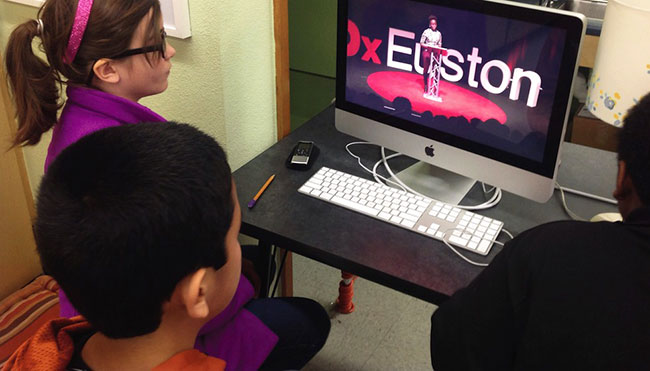
Figure 9. Genre Study
In the past, Lee would not have been able to fully participate in this learning experience because she was pulled out of class for additional services. But in the Hive Society, inclusive digital literacy practices and differentiated instruction provided Lee with the scaffolds she needed to research and present on her topic.
She brainstormed ideas for her project, then shared her options within her small group (see Figure 10). During her small‐group discussion, she and another student were generating lots of options for the talk and decided that because their interests were similar and they enjoyed thinking about the topic together, they would work as a team for the talk and presentation.
After sharing this option with Emily, they created a plan for accomplishing the tasks related to the assignment and dividing up the workload. Lee and her partner were excited about the project and presenting their perspective about how fashion (their topic) is an avenue for exploring and expressing identity and political beliefs (see Figure 11).
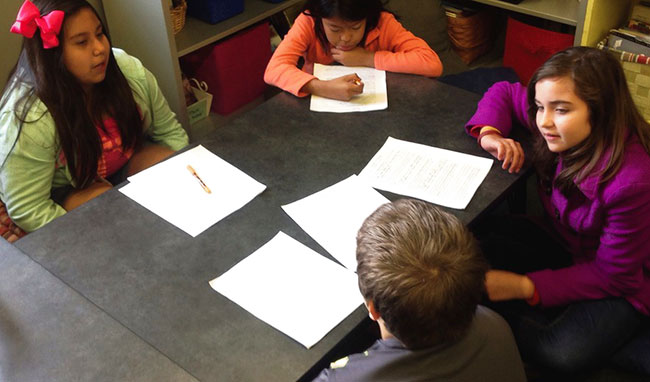
Figure 10. Research Group Meeting for Hive Talk
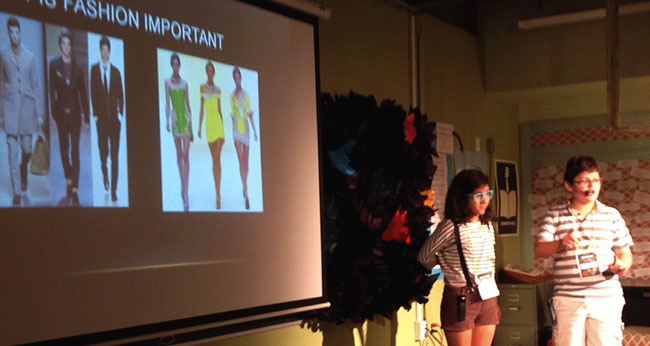
Figure 11. Lee and Alex Presenting Their Project
For eight weeks, Lee and her partner moved between researching their topic, selecting images for the presentation, translating their notes into bullet points for their PowerPoint, writing, revising, and rehearsing their talk (cyclical process). During each phase, they conferred with Emily to receive feedback on their research, drafts of their talk, content of their PowerPoint, effectiveness of their presentation style, and strategies for engaging with the audience.
Emily relied on these conferences to collect assessment data that informed her teaching. She checked in with students, noting their progress, questions, and areas of misunderstanding. She also made note of her students’ strengths and areas of leadership and applied this information to her process for assigning jobs for the Hive Talks.
The students were in charge of making name tags, running the computer monitor that was used as a teleprompter, designing and installing the background for the set, setting up the microphone and performing sound checks, and greeting guests who attended the day‐long event (see Figure 12).
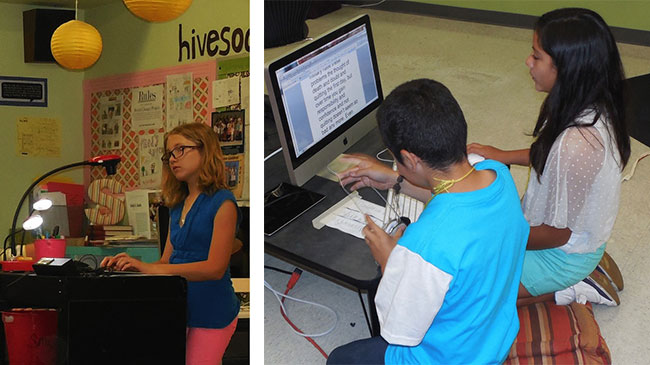
Figure 12. Student‐Led Technology Crew
Conclusion
Situating digital tool use in the larger classroom context has potential to illuminate the possibility for 21st‐century literacies to inform classroom discourse and digital learning experiences. By privileging the relationships and roles students developed and sustained across time, their knowledge construction as well as their commitment to collective thinking and learning is honored. Reflecting on Lipman’s (2004) framework, the class environment, formulation of the curriculum, and instructional practices align with the pursuit of equity, critical literacy, and agency.
The examples we shared in each section collectively speak to the tenets of this framework and provide accessible layered opportunities to think about social issues across modalities. Table 1 summarizes how the digital tools Lee used across the literacy practices we described in this article repositioned her as a 21st‐century literacy learner and adhered to Lipman’s (2004) framework.
Table 1. Chart of Lee’s Literacy Practices
| App/Digital Tool | Literacy Practice | Shift for Lee |
|---|---|---|
| Corkulous | Recording predictions, thoughts, and questions regarding her literature circle bookArea for brainstorming a possible project that stems from identifying themes that exist throughout the book | She has an area to list her thoughts and make a plan for possible projects. She also has a space to brainstorm about possible projects and record the information she has researched. |
| Researching information from previously gathered articles about a topic | She selects texts for her inquiry project that are based on her interest and not her reading level. | |
| GarageBand | Creating an outline of a topic that is important to her Ability to take written text and make it into an oral presentation by creating a podcastUsing selective vocabulary to elicit different emotions | She is the writer and producer of a narrative that is meaningful to her. |
| Comic Strip Generator | Composing and creating multimodal artifacts to demonstrate her understanding of text connections (text to world, text to self, text to text)Platform to share thoughts through written, oral, and visual forms of communication | She is able to share her thinking and interact with local and global communities. |
| PowerPoint/Prezi | Researching information pertaining to the topic of her choiceSynthesizing the research to fit an oral presentation; creating a PowerPoint to highlight important aspects of the talk and emphasize certain components that were discussed | She is positioned as an expert who has important information to share about a topic that is important to her. |
| Stop‐Motion Animation | Creating a video to animate a written script (brainstorming and editing is required before attempting the final product) | She is a writer and producer of a collaborative film and thus a skilled user of 21st‐century literacy tools. |
We began this process wanting to understand how educators could circumvent underlying ideologies of school curricula and traditional teacher‐student dynamics through the use of co‐constructed curricula centering on student interests. We found that when students had choice, layered with space for inquiry and collaboration, the curriculum became more inviting and grounded in the lived experiences students drew on to make sense of the world.
We also learned that when student interests are the focus of the curriculum, digital tools and 21st‐century literacy practices were students’ preferred modes and means of learning to communicate with a variety of audiences about topics that mattered to them. Lastly, because Emily is committed to embodying a social justice pedagogy in language arts and relates the majority of projects in the Hive Society to topics about equity and power, students are able to examine systemic or institutional causes for such inequities in depth across the school year.
Teaching grounded in a 21st‐century literacies framework created expansive ways of learning and included more problem‐posing innovative instructional practices. For Lee, being positioned as a person who is capable of choosing her own topic for inquiry, creating collaborative advocacy projects, and sharing what she learned across semiotic modes of learning embodied what it meant to be a learner in her class. She was not pulled out of class for remedial instruction that restricted her engagement with 21st‐century literacies; rather, she thrives because of the new skill set she is learning and putting to use each day. It is here that Lee and her fellow classmates learn together as peers, teachers and, perhaps most importantly, co‐constructors of learning in an inclusive classroom where everyone’s thoughts are heard, valued, and respected.
Detra Price‐Dennis, Kathlene A. Holmes, and Emily Smith. Exploring Digital Literacy Practices in an Inclusive Classroom. The Reading Teacher (Volume 69, Issue 2), September/October 2015, pages 195-205. The International Literacy Association.
